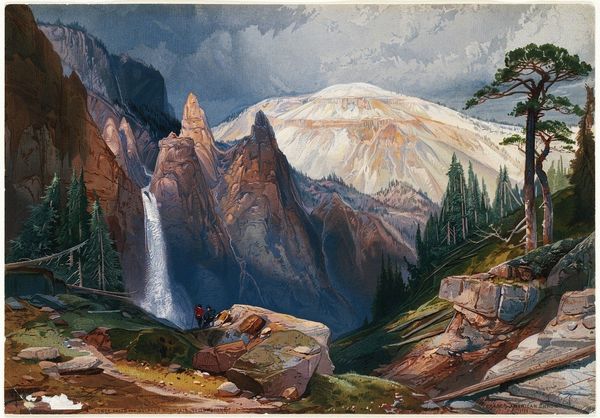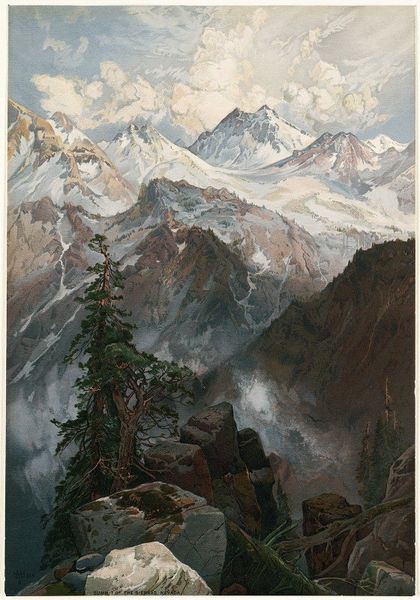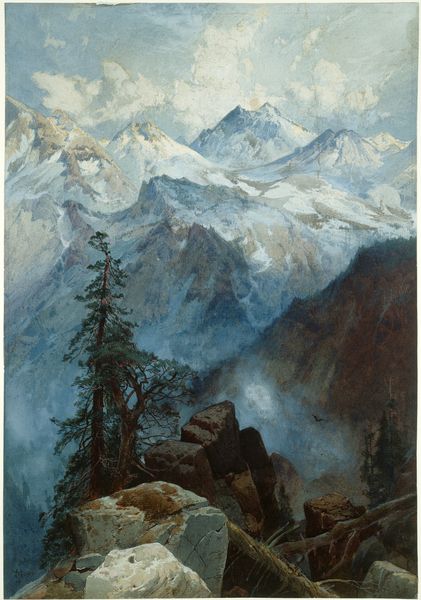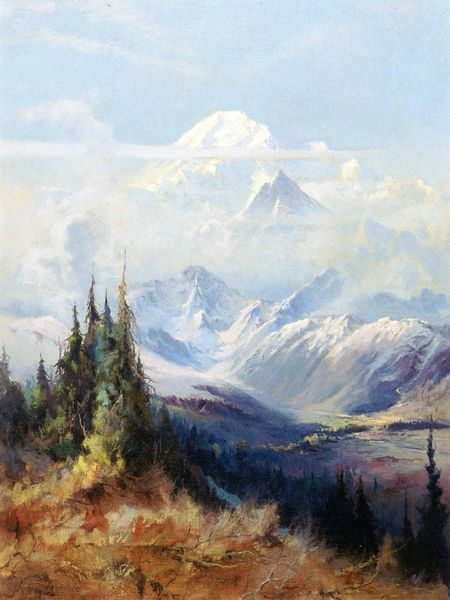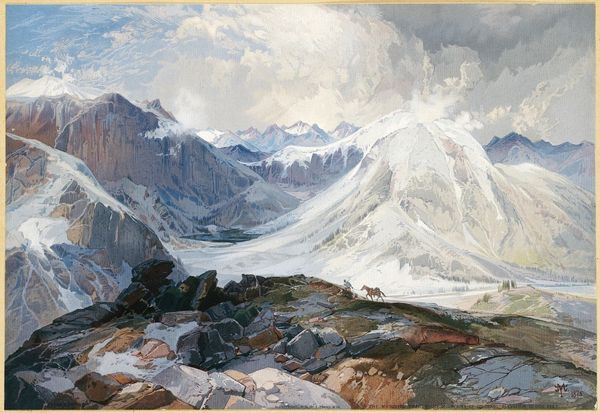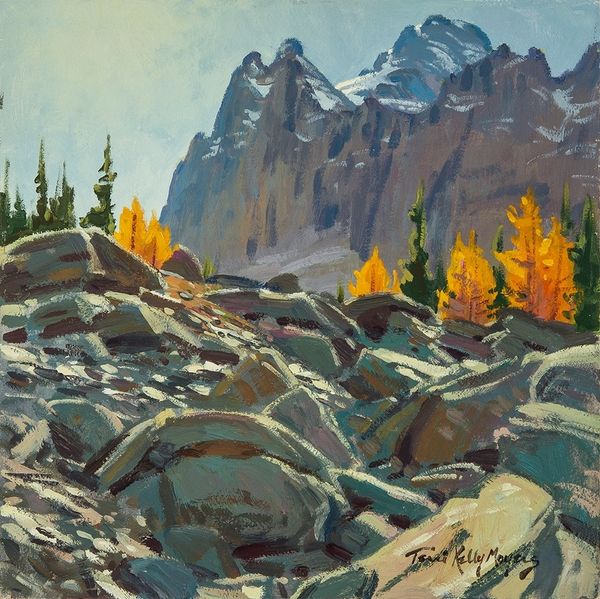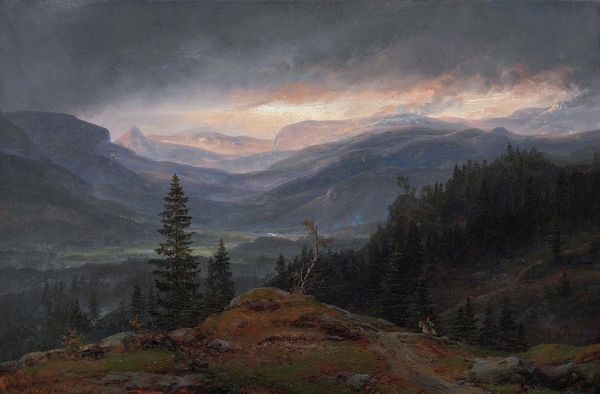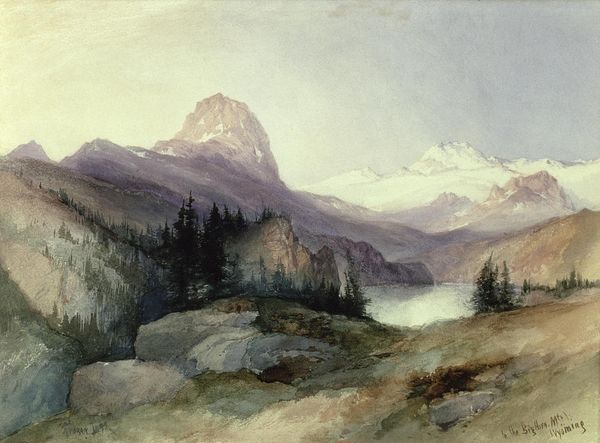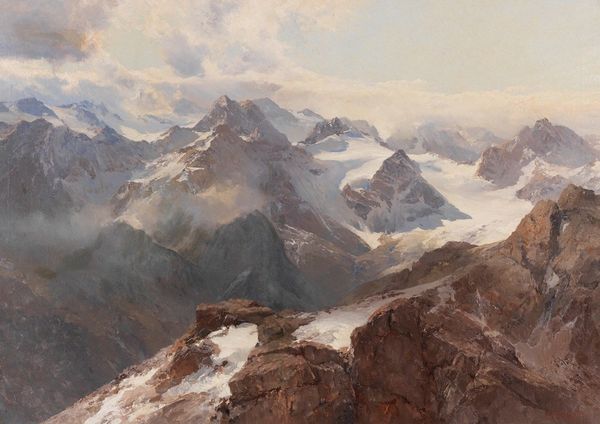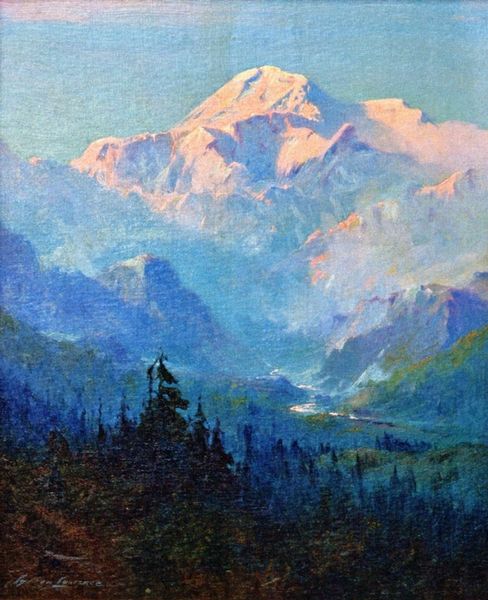
Copyright: Public Domain: Artvee
Curator: Thomas Moran, around 1875, painted this stunning view, entitled "Lower Yellowstone Range," in tempera. What’s your immediate sense of the landscape here? Editor: Whoa. I’m struck by how…quiet it feels, but in a dramatic, powerful way, you know? The way the colors soften into the distance—it's like witnessing the earth breathe. And the light—that sunset light on the cliffs—makes them look alive, almost golden. Curator: Absolutely. Consider the timing. The Yellowstone area was a point of intense interest around this time. Manifest Destiny played out on these landscapes, where depictions like this were used to promote westward expansion and legitimize U.S. claims over Indigenous lands. The sublime becomes a political tool. Editor: It's gorgeous, but heavy. It’s impossible to separate the romantic beauty from that reality, that context. Like the way he uses perspective—pulling you in—but to what end? Are we supposed to be awed or...complicit? Or both? Curator: Moran’s work contributed directly to the establishment of Yellowstone as a National Park. So we have this tension: preservation born out of colonial ambition and romantic idealization. It prompts us to investigate ideas around environmental ethics, race, and ownership. Who gets to claim and frame these spaces? Editor: Art’s such a sneaky mirror, isn't it? You see this awesome vista, and you think 'beauty', but underneath, there’s so much…history, so many stories fighting to be seen. I almost wish the painting would tell us everything that’s happened, what's going to happen. What kind of futures it’s painting over. Curator: Perhaps its invitation is that very prompting; its real subject: the ethics of seeing. Editor: Yeah, you know? I’ll definitely look at landscapes differently now. Curator: That’s the hope.
Comments
No comments
Be the first to comment and join the conversation on the ultimate creative platform.
